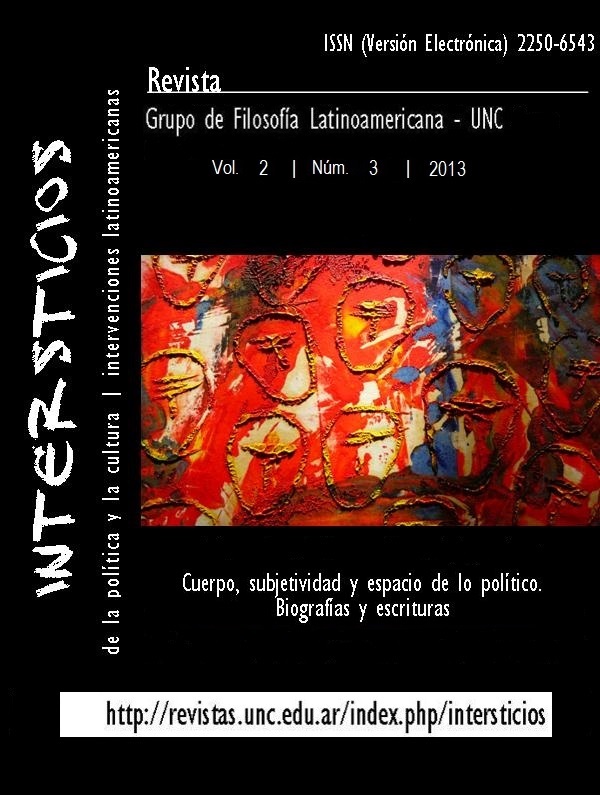SENTIDOS DEL CUERPO: PENAS Y CASTIGOS EN LA LITERATURA ARGENTINA
Abstract
Resumen:
A través de la escritura la corporalidad se configura con sus diversas marcas y rasgos. En particular, la literatura a veces funciona como una máquina de producir sentido político. El cuento del escritor argentino Osvaldo Lamborghini “El niño proletario”, tiene como característica la representación de la violencia encarnada en el cuerpo. Se ocupan espacios en las cuales éstos se ponen en contacto y marcan una posición respecto a otro (cuerpo). En “El niño proletario”, la idea de lo corporal y sus implicancias en relación con lo carnavalesco y expiatorio, conforman aspectos del relato.
Palabras clave: cuerpo, poder, resistencia, otredad, comunidad
Abstract:
Through the writing process, bodies are written with different marks and aspects. In particular, the literature sometimes works as a machine to produce political sense. The tale of the Argentinean writer Osvaldo Lamborghini "The proletarian child", is characterized by the depiction of violence embodied in the body occupying spaces in which the bodies are brought into contact and limit a position on another body. In “The proletarian child” the idea of the body and its implications regarding the carnavalesque and expiatory, are the main characteristics of the story.
Key words: body, power, resistance, otherness, community
Downloads
Downloads
Published
Issue
Section
License
Authors who have publications with this journal agree to the following terms:
a. Authors will retain their copyright and grant the journal the right of first publication of their work, which will simultaneously be subject to the Creative Commons Attribution License that allows third parties to share the work as long as its author and first publication in this journal are indicated.
b. Authors may adopt other non-exclusive license agreements for distribution of the published version of the work (e.g., deposit it in an institutional telematic archive or publish it in a monographic volume) as long as the initial publication in this journal is indicated.
c. Authors are allowed and encouraged to disseminate their work through the Internet (e.g., in institutional telematic archives or on their web page) after the publication process, which may produce interesting exchanges and increase citations of the published work (see The effect of open access).


